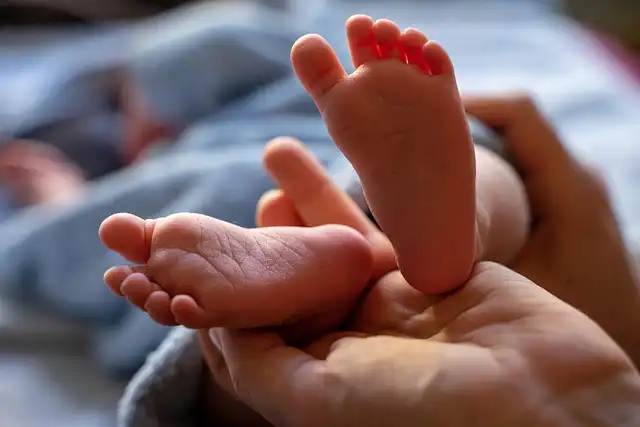Jarcovjáková: Intimate Photos, Queer Life & Frustration

A look into Libuše Jarcovjáková's intimate photography, state homophobia, and personal frustration in Tasovská's film. Showcasing queer life in Prague and journeys through rejection.
Jarcovjáková produces an interesting subject, particularly as a person catching her own psychological frustration with the shapes of her body and face. Owing to the nature of her pictures– slivers of time sealed in place, and never ever planned for movement– there’s only so long “I’m Not Whatever I Want to Be” can go without sensation outstretched. While each of the photos, independently, includes the tip of motion (sometimes, heavenly strokes of light subjected in detail), Jarcovjáková’s collection all at once isn’t a narrative in nature, at the very least not in the way we might think of narratives in cinema.
State Homophobia and Queer Nightlife
State homophobia is a crucial concern in Jarcovjáková’s work, and she locates convenience with observation, highlighting life in all its tones, albeit behind closed doors. Tasovská mirrors this imaginative reaction in energised ways, in between making use of strobing results to match the intoxicating chaos of Prague’s queer night life (come with by a contemporary, techno-infused tracks by DJ VOID) and by introducing color in short lived minutes of freedom. Beyond a point, Jarcovjáková considers herself a continuous outsider, even more comfortable at the margins– whether as an outcast in her very own country (and amongst its Romani population), or as a visitor in someone else’s.
Jarcovjáková’s Photographic Journey
The resultant photoroman (à la Chris Pen’s “La Jetée”) resembles motion via successive shots, and with the positioning of each image on display, while utilizing refined foleys to develop a soundscape of time and location. As Jarcovjáková journeys from the previous Czechoslovakia to Japan and West Berlin, navigating rejection and the lives of various enthusiasts, the murmurs of voices, quiet footprints and hums of congested rooms accompany her striking black-and-white photography. Some images even broaden and unfold, their concealed halves fading-in to disclose brand-new layers and measurements to the places and individuals she caught decades prior.
Tasovská’s Co-Authorship
Whereas chronicles of its ilk often tend to merely regard their subjects’ work at a range, Klára Tasovská’s function, regarding queer Czech digital photographer Libuše Jarcovjáková, conscripts her as a co-author by having her read from her journals throughout the ’80s and 1970s. Jarcovjáková, who has actually been called the Nan Goldin of Czechoslovakia, records plain and intimate images, disclosing individuals via overexposed skin simply as much as concealing them in shadow. Jarcovjáková makes for a fascinating subject, specifically as a person recording her very own psychological frustration through the contours of her body and face. In the interim, one might become impatient for Tasovská to transform the following corner of Jarcovjáková’s tale, leaving little space to ruminate, as an excellent digital photography exhibition would.
The film builds very well to these moments, where the euphoria of breakable belonging is front and. Nonetheless, in the interim, one may come to be impatient for Tasovská to turn the following corner of Jarcovjáková’s tale, leaving little area to ponder, as a good photography exhibition would. The handshake of different creative types that the film efforts is good in spirit, and it commonly produces remarkable results, even if the whole is hardly ever pleasing.
Creative Collaboration and Impact
While the film’s English language title talks with a constant state of complication and self-reproach, its original name, “Ještě nejsem, kým chci být,” translates to the intriguing “I’m Not Yet Who I Intended to Be”– keep in mind the “yet”– meaning the film being a journal of not simply self-image, but of creative and individual process. Jarcovjáková, who has been called the Nan Goldin of Czechoslovakia, catches intimate and raw photos, disclosing individuals via overexposed skin just as much as concealing them in darkness. Tasovská’s docudrama is comparable in this regard; it lines up simply sufficient pictures and recollections to provide us access and insight, yet not a lot that we’re satiated at one time.
A gallery of Jarcovjáková’s job could gesture towards her bigger story, meant to be considered over at a leisurely pace. However Tasovská’s film fees ahead breathlessly at breakneck speed. This isn’t a cardinal sin, however the method presents an obstacle for the film to get rid of, which it just takes care of to in moments of denouement. Its connective cells, nonetheless, might shed the audience along the way, as it coheres just into a remote political evaluation of the globe around its subject, rarely offering us adequate time to get fully soaked up in the significance of her images.
While sometimes languorous, the 2026 Czech Oscar entry “I’m Not Everything I Want to Be” is one of the rare documentaries about a musician that goes above and beyond to personify its topic’s innovative spirit, commonly to a mistake. Whereas chronicles of its ilk often tend to just regard their topics’ job at a range, Klára Tasovská’s feature, regarding queer Czech digital photographer Libuše Jarcovjáková, conscripts her as a co-author by having her read from her journals throughout the 1970s and ’80s.
1 Czech film2 intimate photos
3 Jarcovjáková
4 photography
5 queer life
6 Tasovská
« Diddy Combs: Appeal Granted, Sentence & Jail LifePluribus: Seehorn’s Sci-Fi Drama After Breaking Bad »
